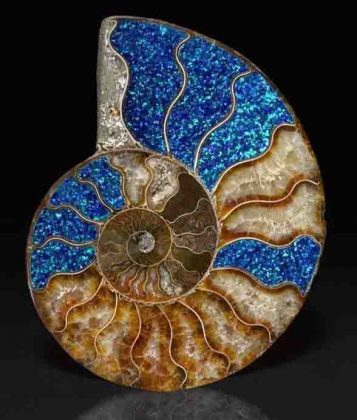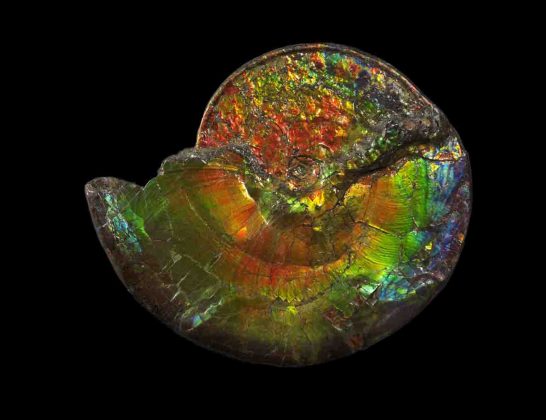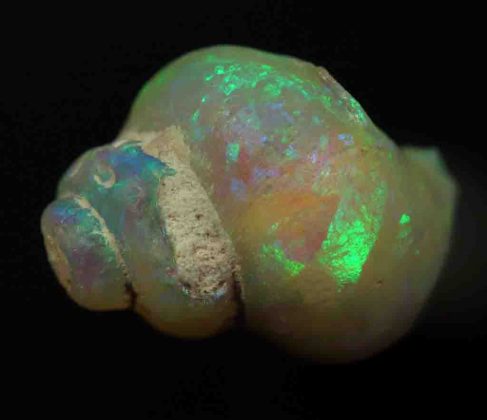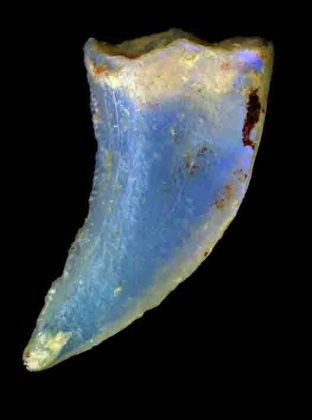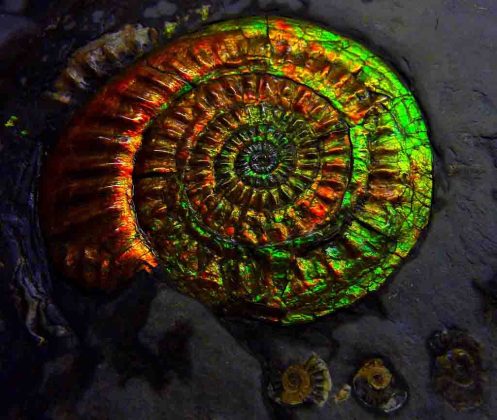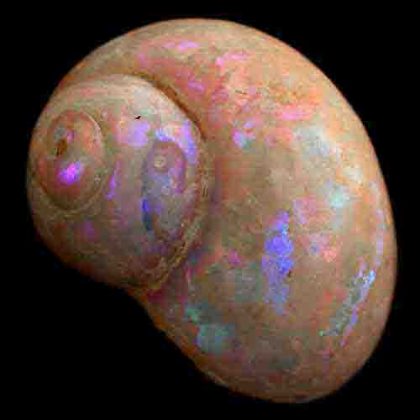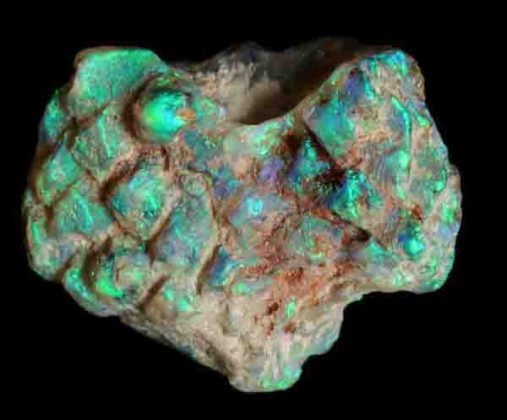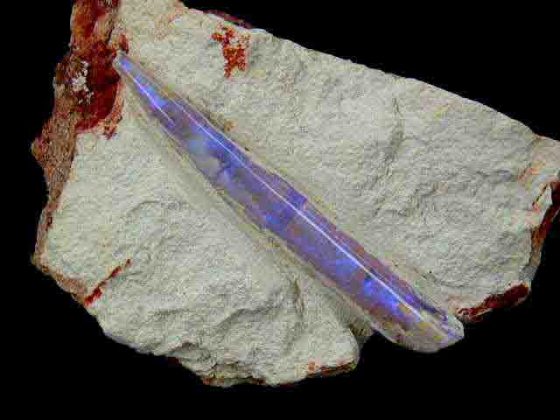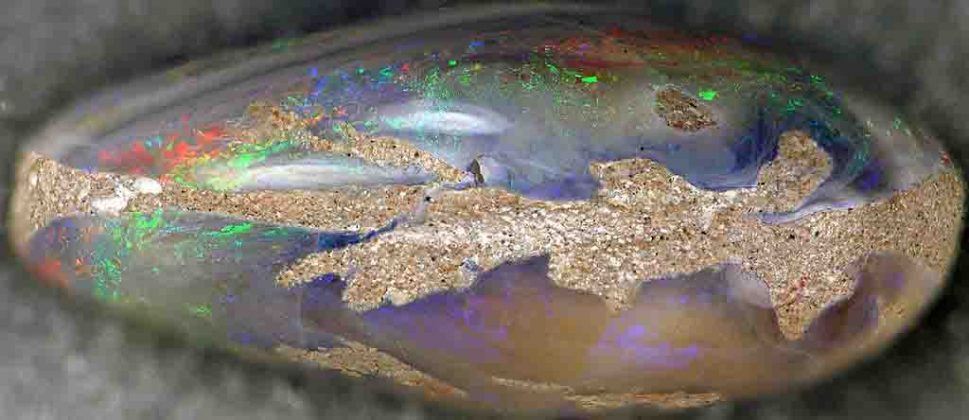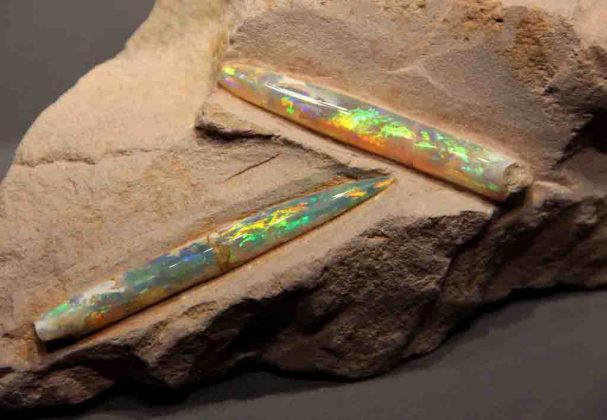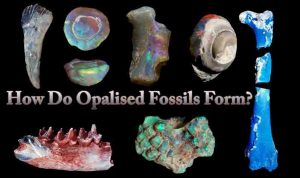
It is extremely rare for conditions to be right for formation of fossils; and even more rare for opalised fossils to form. Usually, only the hard parts of living things fossilise – for example seed pods, wood, teeth, bones and shells. This often happens after the plant or animal (or a part of it) is buried in sand or other sediments that slowly turn to stone.
Opal forms in cavities within rocks. If a cavity has formed because a bone, shell or pinecone was buried in the sand or clay that later became the rock, and conditions are right for opal formation, then the opal forms a fossil replica of the original object that was buried. We get opalised fossils of two kinds:
- Internal details not preserved: Opal starts as a solution of silica in water. If the silica solution fills an empty space left by a shell, bone etc that has rotted away – like jelly poured into a mould – it may harden to form an opalised cast of the original object. Most opalised shell fossils are ‘jelly mould’ fossils – the outside shape is beautifully preserved, but the opal inside doesn’t record any of the creature’s internal structure.
- Internal details preserved: If the buried organic material hasn’t rotted away and a silica solution soaks into it, when the silica hardens it may form an opal replica of the internal structure of the object. This happens sometimes with wood or bone.


